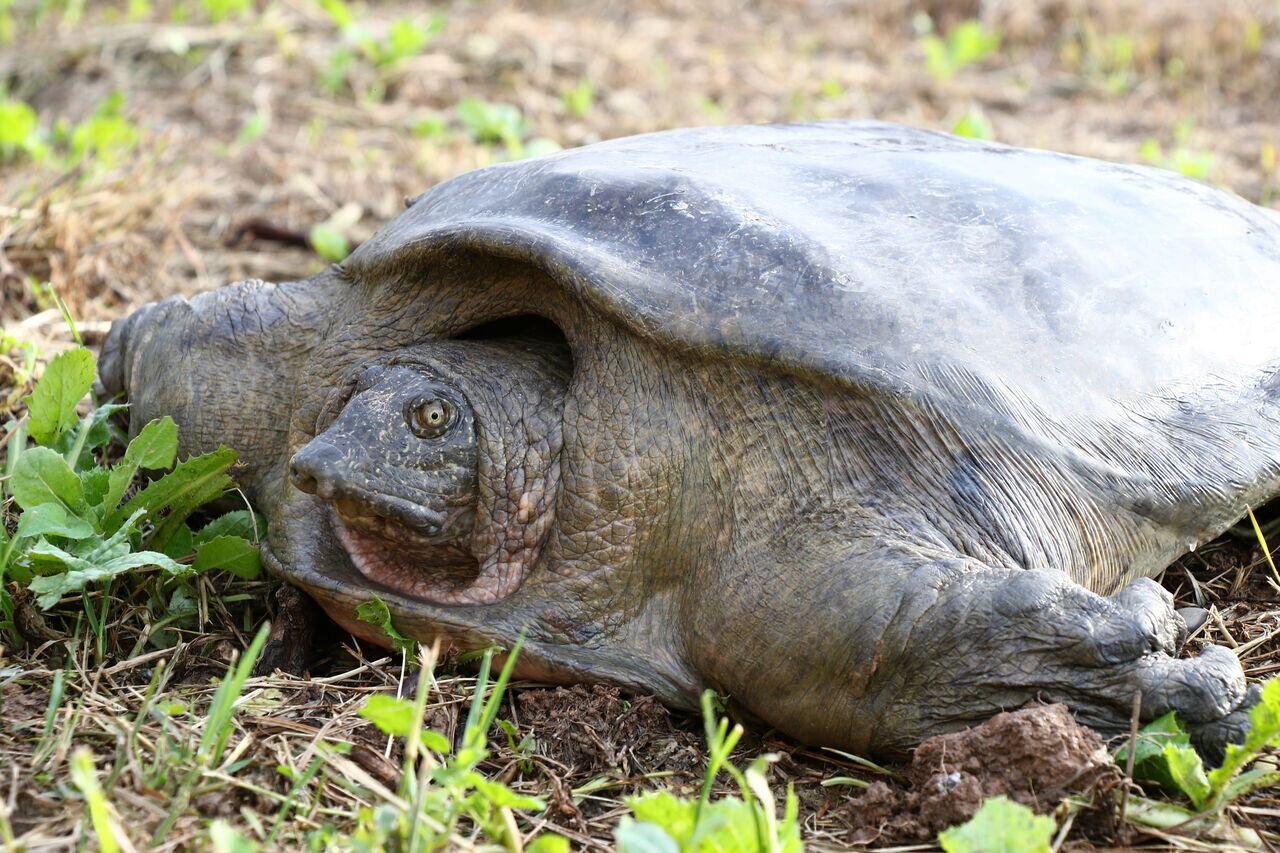Euphrates turtle conservation on DOE’s agenda

TEHRAN – The Department of Environment is planning to save the Euphrates turtle which has been classified as a critically endangered animal on the International Union for Conservation of Nature (IUCN) red list.
The Euphrates turtle or Mesopotamian softshell turtle is a species of soft-shelled turtle in the family of Trionychidae.
It lives in the Euphrates -Tigris rivers basin in Iraq, Iran, Turkey, and Syria. The species is on the brink of extinction due to habitat destruction, pollution, and extermination by fishermen. It is the only species in the family of Trionychidae found in Iran.
This freshwater turtle can weigh up to 20 kg (44 pounds), and it has a smooth leathery shell that can reach up to 68 cm in length. They are mainly found in a wide range of freshwater habitats such as rivers, streams, lakes, ponds, reservoirs, and marshlands.
The turtle’s habitat in Iran is mainly in the southwestern Khuzestan province including the Euphrates-Tigris basins, Hur al-Azim and Shadegan wetlands, Karun, Karkheh, Dez, and Jarri rivers and their tributaries.
The turtle lives underwater most of the time, and sometimes they can be seen burying themselves in sand and mud. The species prefer shallow calm water and lay eggs in the sand and soft soils on the banks of rivers.
Let’s save unique species
With its climatic and geographic diversity, Iran is one of the most important countries in terms of biodiversity in the world. It encompasses two out of 36 global biodiversity hotspots including Irano-Anatolian and Caucasus hotspots.
More than 8,000, 2,000, and 25,000 species of plants, vertebrates, and invertebrates, respectively, show Iran's rich biodiversity and the importance of its preservation.
Wildlife conservation, which includes protecting all living things on the planet, plant and animal species, and microorganisms, means preserving the components of a large network. A network wherein all the components are interconnected and depend on each other in different ways.
People everywhere rely on wildlife and biodiversity-based resources to meet their needs - from food, to fuel, medicines, housing, and clothing. By saving wildlife we protect all forms of life on the planet, ourselves, and ultimately maintain the balance of life on the earth.
That’s why in December 2013, the United Nations General Assembly decided to proclaim March 3 as World Wildlife Day to celebrate and raise awareness of the world’s wild fauna and flora.
Since then, every year a special theme has been chosen to celebrate the occasion; this year's theme is “Connecting People and Planet: Exploring Digital Innovation in Wildlife Conservation," which highlights the potential of technology to advance conservation efforts by offering novel solutions to longstanding conservation challenges.
It focuses on digital innovation and emphasizes how digital conservation technologies and services can drive wildlife conservation, sustainable and legal wildlife trade, and human-wildlife coexistence.
Digital technologies, including particular software, drones equipped with artificial intelligence, and trackers, have the power to enhance monitoring and protection efforts. They have helped a lot to protect wildlife in the world and Iran although access to many equipment is difficult in Iran due to sanctions.
While technological advancements have significantly improved various aspects of wildlife conservation, including research, communication, tracking, and DNA analysis, challenges such as uneven access, environmental pollution, and unsustainable technology use impede achieving universal digital inclusion by 2030.
However, World Wildlife Day urges individuals, communities, and governments worldwide to engage in practices that contribute to the sustainability of the planet’s biodiversity.
By improving local communities, private sectors, and individuals’ roles in preserving wildlife along with the help of today's science and technology, we can make sure that ecosystems can thrive and plant and animal species can exist for future generations.
Endangered species
There are many threats to endangered wildlife species, including mammals, reptiles, amphibians, fish, and birds.
Habitat destruction, fragmentation, and modification caused by human-led activities such as industrial and residential development, logging, crop farming, livestock grazing, mining, road and dam building, and pesticide use have taken an extreme toll on threatened and endangered wildlife populations at an alarming rate.
Currently, about 128 species of animals and vertebrates in the country are at risk of extinction, some of which are not in good condition, and amphibians are the most vulnerable in this area.
MT/MG
